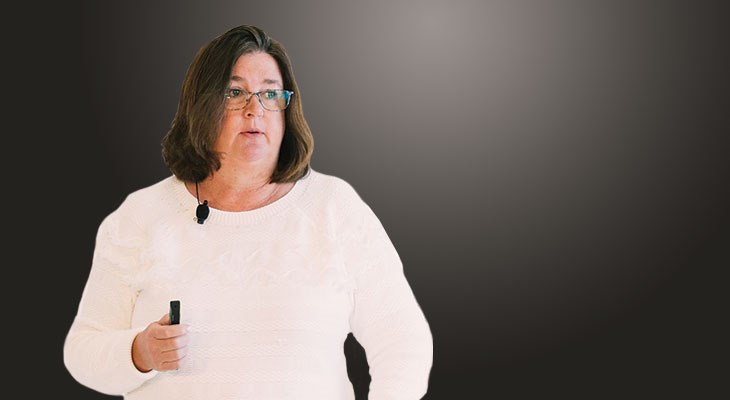About three years ago, DHL Supply Chain changed how it considered digitalization, moving from defense to offense.
The North American headquarters, based in Columbus, started making connections with startups and early-stage investors, sharing what was important to DHL and its customers.
“It really changed, especially what I do, from primarily just dealing with established software providers to dealing with small startup companies with an idea who are looking for feedback on their product or service,” says Sally Miller, CIO North America, DHL Supply Chain, which has 500 sites that employ roughly 50,000 people.
Not only did DHL see this approach as a potential competitive advantage, it positioned the logistics and supply chain company as an expert for its customers.
“We can demonstrate and provide value to them, not just listen to them but explain what we’re seeing and what we think will help them,” she says.
Smart Business Dealmakers spoke with Miller about how DHL Supply Chain set up and runs this innovation funnel.
How does new technology typically move through your innovation funnel?
It starts out as a proof of concept, where we spend time in a warehouse or transportation center and understand what the technology does. We decide if we want to take it from proof of concept to pilot.
In the pilot phase, we may pay some of the cost, but it varies case by case. Once a product makes it through pilot, we consider it available for implementation at any of our sites.
It is an iterative process with some vendors. They go back to the lab, make some tweaks, and we try again.
Over three years, what products have moved through the funnel?
We have looked at a lot, with about 10 getting through. There is a lot of hype, but at the end of the day, it has to deliver a return. We’re not going to increase our costs just to have a robot in the building. It has to improve our quality in service to our customer and reduce our costs.
Also, if your business and processes change and you’ve invested in fixed automation that’s not flexible, it can really bite you.
Collaborative robots, robots that assist us in picking, have been very exciting. We’re working with three companies in North America and have a couple hundred bots deployed.
We’re also using augmented reality. We work with Google glasses and a heads-up display to display an image to the associate to help determine what to pick and where to put it. That helps training and onboarding time. It also increases their productivity and increases the quality. We’re using that a lot in the health care space.
We used to have people cleaning warehouses with a sweeper/scrubber. Those are now all autonomous.
We see our biggest opportunity as indoor robotic transport. We have approximately 11,000 material handling operators that are driving vehicles from point A to point B. If we can replace that manual work by an autonomous vehicle, even if it’s just 80 to 90 percent of the time, that is a huge benefit. We’re working with several companies to get the technology to where it can provide that coverage.
We’ve also done a lot on the data analytics front for our end-to-end supply chain visibility tools.
What has the employee response been?
We do not have enough people to fill open spots, but I get questions about whether associates are worried that we’re taking their jobs away. They don’t view it that way. They think it’s cool. Millennials stay at places where more technology is employed.
Has DHL Supply Chain made equity investments?
We have done a couple of investments in software companies. It’s more getting commitments from the vendors on priority production than taking equity stakes in a bunch of startup companies.
DHL also just opened an innovation center near O’Hare Airport in Chicago for North and South America. (DHL globally has an innovation center in Asia and one in Europe.) It’s a place that we take partners that has a lot of the technology that we’re deploying and looking at. It stimulates creative thinking and facilitates customer meetings.
What is the structure to ensure returns and value?
We have five business units, market verticals that we support, so we have a business innovation lead in each of those market verticals. A central team facilitates looking at and talking to vendors, pairing them up with the right business unit to get a proof of concept going.
We have a process reporting on our pilots and our projects for costing, return, all that sort of thing. We’ve put a lot of structure around it to make us more efficient. Until you get your hands on it, you can’t validate that it will work.
Going forward, we’re going to continue what we’re doing and focus on getting those products that have made it through the funnel widely deployed, because that takes a lot of effort. At the same time, we want to continue to look at next generations of some of the technologies that didn’t make it through our innovation funnel — keep in touch with those vendors to get things where we need them to be.
What’s your advice for others that want to develop an innovation funnel of new products from startups?
They need to develop a structured process of how they’re going to evaluate things, and to resource it, so dedicate a couple people. They have to have support from the top because it is a bit of a culture change to take a risk on something that maybe isn’t widely deployed in the market.




